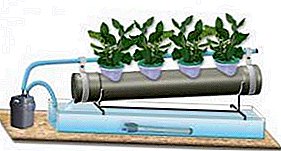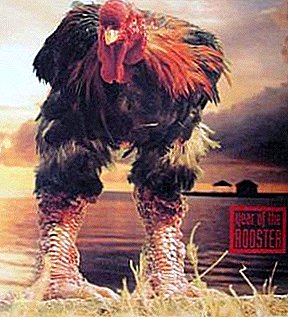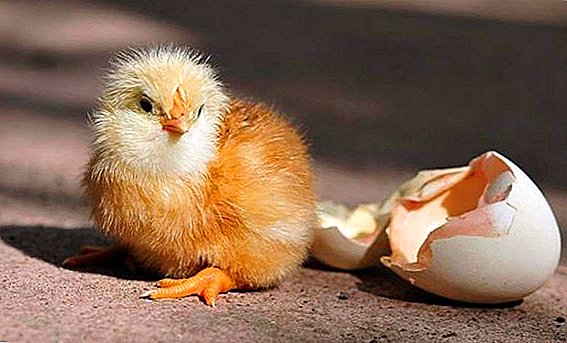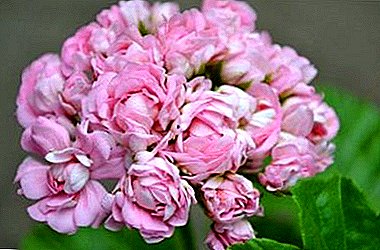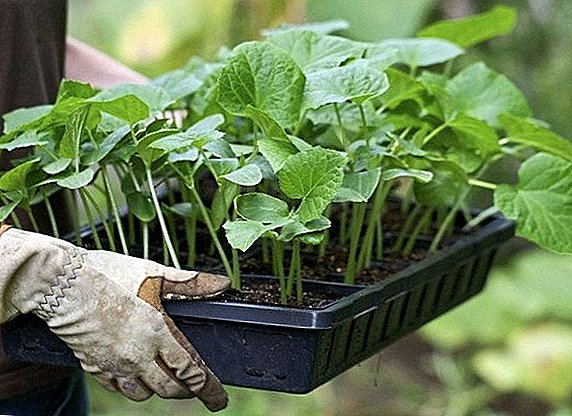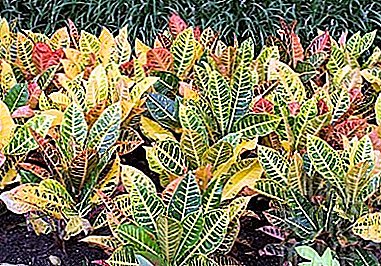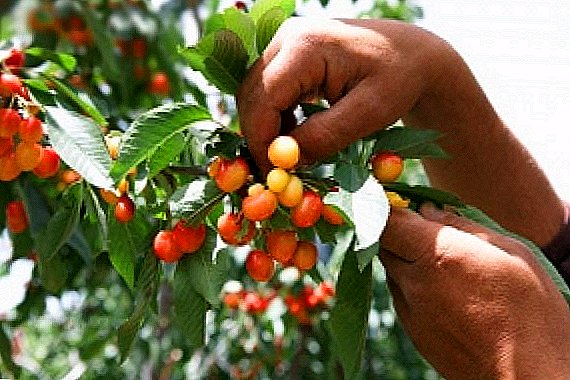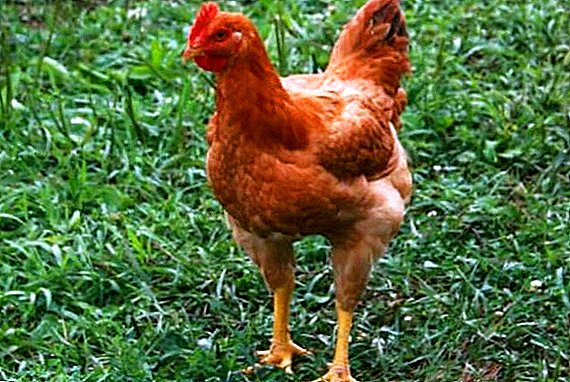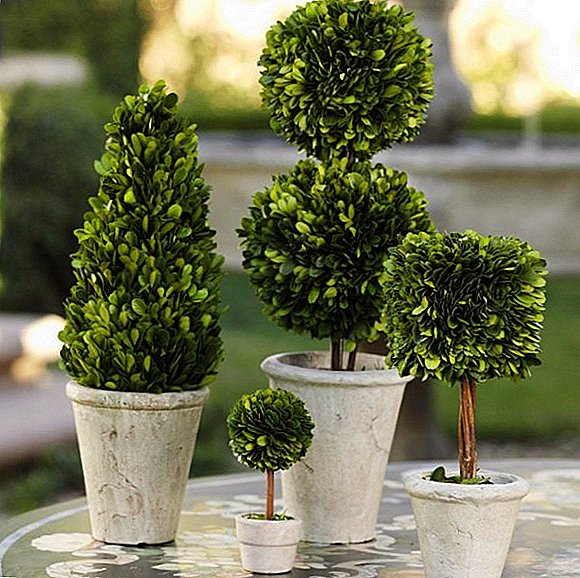 Each of us is familiar with the plant used in creating a hedge, called evergreen boxwood. Recently, boxwood began to grow as a houseplant in a pot. Small leaves, slow growth and the ability to perfectly tolerate a haircut allow you to grow dwarf trees from it.
Each of us is familiar with the plant used in creating a hedge, called evergreen boxwood. Recently, boxwood began to grow as a houseplant in a pot. Small leaves, slow growth and the ability to perfectly tolerate a haircut allow you to grow dwarf trees from it.
The plant also has beneficial properties. For example, it emits phytoncides - neutralizers of harmful bacteria.
How to buy a young seedling in the store
To select young saplings of boxwood in a store, you need to know which ones are grown at home. In particular, these are such species as:
- Balearic (leaf length up to 4.5 cm);
- small-leaved (leaf length up to 2.5 cm);
- evergreen (leaf length up to 3 cm).

When buying, pay attention to the appearance of the plant. The leaves should be dark green, the stems are not bare. This is a sign of a healthy plant..
Growing conditions
Before you properly plant the box in the spring, it is necessary to examine the conditions of its cultivation. At home, boxwood requires careful and careful care.
Lighting Requirements
 The box loves the lit place, but does not transfer direct sunshine. Under the scorching sun the leaves of the plant turn yellow and dry. Often this happens at the end of winter, when the root system is still asleep and the foliage wakes up under intense sunlight.
The box loves the lit place, but does not transfer direct sunshine. Under the scorching sun the leaves of the plant turn yellow and dry. Often this happens at the end of winter, when the root system is still asleep and the foliage wakes up under intense sunlight.
The leaves do not get enough moisture and dry, which leads to burnout of boxwood bushes. To prevent this from happening, bushes need to cover.
Temperature
At moderate temperatures, room boxwood grows well. But in winter it needs a temperature of + 6 ... + 10 ° С. The box likes open space, therefore in the summer it is better to take it out to the balcony or to the courtyard.
Care for indoor boxwood
Boxwood is a rather capricious houseplant, so with improper care it can completely lose foliage.
Watering and humidity
On hot days, indoor boxwood needs abundant watering and daily spraying with water at room temperature. Since the roots of boxwood do not tolerate excessive moisture, autumn and winter watering must be reduced.
Fertilizer and top dressing of the soil
In spring and summer you need to feed boxwood once in 10-12 days. It is necessary to make organic and mineral fertilizers in turn. For boxwood suitable fertilizer intended for azaleas. Before we do the haircut, it is necessary to feed the boxwood in the spring. This will help stimulate the growth and development of foliage plants.
Cropping and crown formation
 Consider when and how to cut boxwood.
Consider when and how to cut boxwood.
Trim room boxwood carried out as needed throughout the year. As the plant grows slowly, crown correction should be well thought out.
However, it is not necessary to be afraid of this process. If your potted plant is well rooted, you can form a crown. This usually occurs in the second year after landing.
To begin with, we determine the form. The shape of a decorative boxwood can be cubic, spherical, conical or any other geometric shape.
To cut the perfect ball, you must first cut out the "equator" and 4 "meridians", and later, focusing on these directions, give the bush a perfectly even spherical shape.
Also for this purpose you can use metal pattern. Its design consists of a rod and a wire nozzle of a semicircular shape freely rotating around it. The rod is stuck into the ground near the trunk of a boxwood. Trimming the excess shoots, encircle around the plant shape.
It is possible to give shape with metal frame. He put on the plant after planting, cut off all the shoots that go beyond the frame. To give shape to such a plant has for several years.
After filling out the form, the metal mesh can be removed, the haircut should be carried out regularly. Usually in this way the plant is shaped into various animals.
Did you know? For the first time the use of a metal frame for creating green sculptures was applied in 1962 in the American Disneyland. These were sculptures of cartoon characters.
 Also looks beautiful bonsai of boxwood. To create a bonsai, it is necessary to trim the leaves and small shoots from the bottom of the boxwood bush. Using a wire, wind the exposed portion of the thin stem at an angle of 45 degrees, forming a tree trunk.
Also looks beautiful bonsai of boxwood. To create a bonsai, it is necessary to trim the leaves and small shoots from the bottom of the boxwood bush. Using a wire, wind the exposed portion of the thin stem at an angle of 45 degrees, forming a tree trunk.
Top shoots cut with scissors in the form of a ball or a drop. To create an inclined branch with wire, give it the necessary shape, and adjust the angle of inclination by fixing to the pot.
The wire should be on the plant no more than 7 months. If it is not removed, then it can grow into the cortex. After removing the wire from an inclined branch, its growth will continue in this direction.
After finishing a haircut, bonsai must be transplanted into a special flat container. To do this, pour drainage 2 cm thick in the bottom of the container. We take the plant out of the pot, clean the roots from the ground and cut them with sharp scissors, leaving the third part.
Next, place the plant in a new container and fall asleep on top of the substrate. It is prepared from clay, humus and sand in a ratio of 1: 2: 2. The substrate can be covered with sphagnum moss. It will retain moisture for the plant and give it an aesthetic look. Watering should be done every 4 days.
Did you know? Topiary refers to the landscape art, the essence of which is in the formation of decorative forms of trees and shrubs with the help of a haircut. Boxwood is perfect for this purpose. The gardener Knei Matius, who lived in the 1st century BC, is the ancestor of topirian art.
Transplant rules
 It's time to find out when to repot the boxwood. A young houseplant under 4 years old needs an annual transplant. A new pot should not be too large compared to the previous one, otherwise it will lead to a delay in the growth of the plant and may destroy it.
It's time to find out when to repot the boxwood. A young houseplant under 4 years old needs an annual transplant. A new pot should not be too large compared to the previous one, otherwise it will lead to a delay in the growth of the plant and may destroy it.
Important! If you have formed bonsai of boxwood, then it is often not necessary to transplant it, so as not to damage the formed shoots. Transplantation can be carried out once in 10 - 15 years.
Methods of breeding indoor boxwood
To understand how boxwood reproduces at home, it is important to know the ways of its reproduction - cuttings and seeds. The most common is grafting. Consider how to grow boxwood yourself.
Cuttings
 The grafting process is carried out in August - September. For this, cuttings are cut with a tree stem up to 9 cm long and two internodes. Rooting takes a long time. To accelerate this process using phytohormones and soil heating.
The grafting process is carried out in August - September. For this, cuttings are cut with a tree stem up to 9 cm long and two internodes. Rooting takes a long time. To accelerate this process using phytohormones and soil heating.
Pot for planting should have a drainage layer. For good plant growth, it is necessary to prepare the soil from a mixture of leafy earth, coniferous earth and coarse sand in a ratio of 2: 1: 1.
Seeds
The method of reproduction using seeds is more laborious.
To do this, ripe seeds are soaked in water with a growth stimulator for one day. Then they are sown on a fabric in a straight line, covered with the other end of the fabric and wound in a roll. This bundle must be kept constantly wet (not wet) for a month until white sprouts appear.
Important! An important stage in the breeding of boxwood seeds - stratification. This is an imitation of the natural winter conditions in which the seeds of the plant are placed to improve seedlings. It is carried out in the refrigerator.
 After germination, the seeds are sown in a mixture of peat and sand in equal quantities, and the container is closed with a film. Shoots should appear no later than three weeks, after which the film is removed. Spring seedlings planted in the ground.
After germination, the seeds are sown in a mixture of peat and sand in equal quantities, and the container is closed with a film. Shoots should appear no later than three weeks, after which the film is removed. Spring seedlings planted in the ground.Diseases and pests
Improper care of the plant affects the decorative qualities of the plant. Excessive watering contributes to the decay of the root system, spraying irregularly - drying the foliage, and the high temperature of the air in winter - dropping the foliage.
Since the leaves and branches of boxwood contain alkaloids (this substance is poisonous for most pests), the list of insects that eat the plant is not so long.
The pests of boxwood include gallitsa, spider mites, scutes.
Galitsa - this is an insect. It forms growths on the stems and trunks of boxwood, within which the process of reproduction and maturation of insect larvae occurs. The larvae feed on the sap of the leaves, causing them to fold.
Did you know? Gallitsa aphidymia is bred artificially in greenhouses to protect grown plants from aphids.
 To prevent the plant from being exposed to this insect, it is necessary to use healthy planting material when planting. With the defeat of the need to cut and burn the damaged foliage, and the plant is treated with fungicides.
To prevent the plant from being exposed to this insect, it is necessary to use healthy planting material when planting. With the defeat of the need to cut and burn the damaged foliage, and the plant is treated with fungicides.Spider mite - common pest of indoor plants. As a result of piercing the tissue with a pest and sucking the plant sap on it, small yellowish spots appear on the leaves.
As a preventive measure, every plant that appears in your home should go through anti-parasitic quarantine. Ticks multiply well in hot, dry weather, therefore it is necessary to spray houseplants and ventilate the room.
In addition to chemicals, spider mite is affected by spraying with soapy water, treatment with an ultraviolet lamp, alcohol treatment of leaves.
Shchitovka - this insect differs from one another in that its body is covered with a wax shield. Insects sit on the plant motionless, pierce the leaves and suck the juice out of them. The impact of shchitovki on boxwood is characterized by the stickiness of the leaves, the appearance of yellow spots on them. Methods of prevention and control are the same as with spider mite.
 It is more problematic to resolve the issue of boxwood diseases and their treatment.. Diseases that can affect boxwood are shoot necrosis. It is characterized by the death of the ends of the shoots and the formation of spots on the leaves.
It is more problematic to resolve the issue of boxwood diseases and their treatment.. Diseases that can affect boxwood are shoot necrosis. It is characterized by the death of the ends of the shoots and the formation of spots on the leaves.
If you look at the section on the diseased branch, you can see the detachment of the cortex and dark circles. A good method of dealing with the disease is to cut off diseased branches. This will provide better air circulation and light penetration. Cut branches burn, and the plant is treated with fungicides based on copper or sulfur.
If boxwood has turned yellow after winter, there may be three reasons, since the symptoms are very similar. This is either shoot necrosis, frostbite of young branches as a result of freezing, or spring burnout of the bush..
 Therefore, it is necessary to cut off the damaged branches and process the fungicide along with some growth regulator to support the plant. A more accurate diagnosis can be made in the laboratory by testing for the presence of necrosis.
Therefore, it is necessary to cut off the damaged branches and process the fungicide along with some growth regulator to support the plant. A more accurate diagnosis can be made in the laboratory by testing for the presence of necrosis.
Also boxwood can be affected by cancer. To combat the disease, it is necessary to trim the affected part of the bush to healthy wood and treat the wound with Fundazol.
Growing and caring for boxwood, you will get great pleasure. It will protect your home from bacteria and create comfort.


